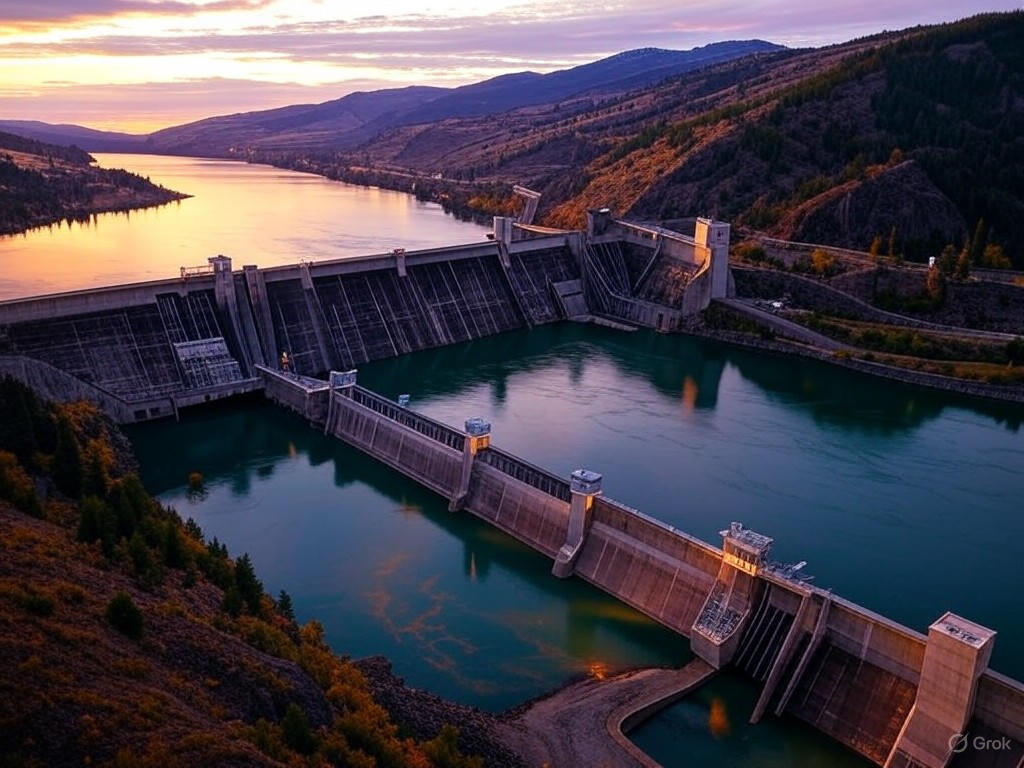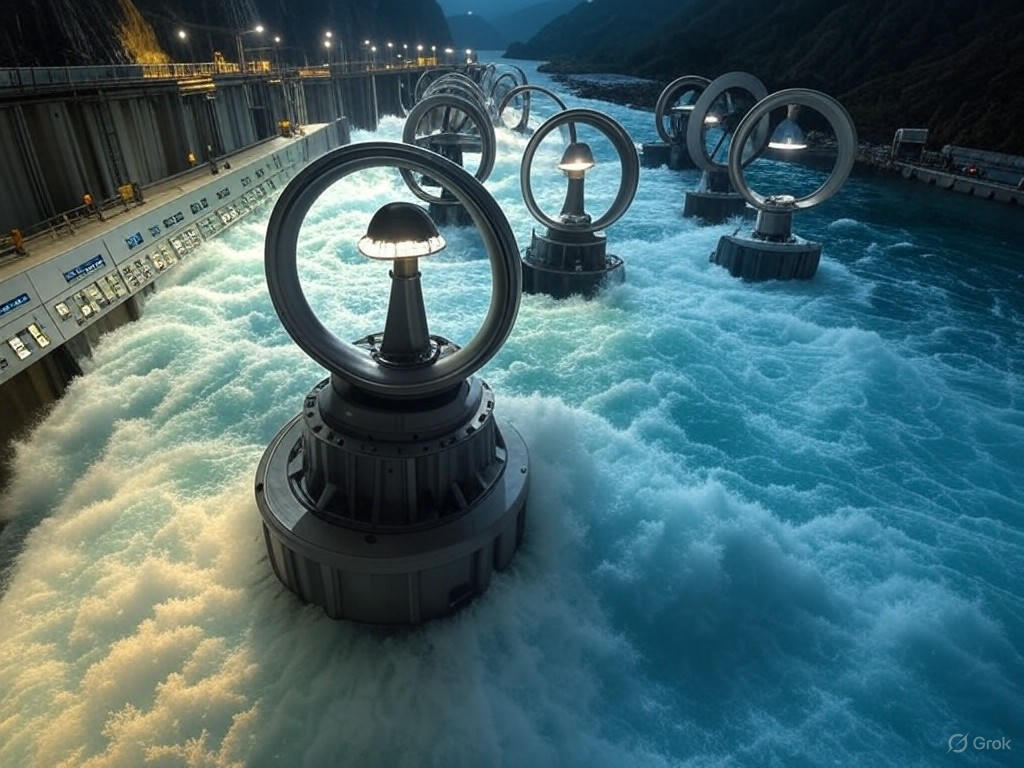Columbia River Treaty: US-Canada Tensions Threaten Hydropower
In the grand tapestry of North American commerce, where rivers flow as freely as capital, the Columbia River Treaty stands as a testament to pragmatic international cooperation. Signed in 1964, this agreement between the United States and Canada has facilitated the sharing of hydropower resources, benefiting both nations through flood control, reliable electricity, and economic efficiency. Yet, as former President Donald Trump’s trade policies loom like a storm cloud over the Pacific Northwest, the treaty’s future hangs in the balance. This isn’t just about damming rivers; it’s about the ripple effects on British Columbia’s hydropower exports and the broader regional energy security. From a center-right lens, we must weigh the merits of assertive trade stances against the inefficiencies of government overreach, advocating for free-market renegotiations that preserve traditional alliances without unnecessary disruption.
Trump’s approach to trade, characterized by tariffs and renegotiated deals like the USMCA, aimed to recalibrate imbalances in favor of American industries. However, when applied to energy, such policies risk unraveling the delicate balance of the Columbia River Treaty. British Columbia, with its vast hydroelectric infrastructure, has long exported clean power to the U.S., particularly to states like Washington and Oregon. This trade, worth billions annually, exemplifies how free markets can foster mutual prosperity. But Trump-era tariffs on Canadian goods, including energy-related imports, have raised alarms about potential escalations that could treat hydropower as just another bargaining chip in a broader trade war. The result? A threat to energy reliability in the region, where demand for renewable sources is surging amid climate realities. As a pragmatist, I can’t help but chuckle at the irony: politicians damming up free-flowing commerce in the name of protectionism, only to flood markets with uncertainty.
The Analysis: Unpacking the Treaty and Trade Tensions
At its core, the Columbia River Treaty is a model of limited government intervention in cross-border affairs. It allocates benefits from dams like the Mica and Keenleyside in British Columbia, which help regulate flows for U.S. projects such as the Grand Coulee Dam. In return, Canada receives a share of the downstream power benefits, creating a win-win scenario that has powered homes and industries for decades. Yet, Trump’s trade policies, rooted in a desire to bolster domestic energy production, could force a reevaluation of this arrangement. For instance, his administration’s imposition of tariffs on Canadian aluminum and steel in 2018 Wall Street Journal set a precedent for viewing Canadian resources as competitors rather than complements.
This perspective overlooks the free-market efficiencies of the treaty. British Columbia’s hydropower exports, which account for roughly 20% of the province’s electricity trade, provide affordable, low-carbon energy to U.S. consumers. According to experts, any disruption could drive up costs for American utilities, potentially increasing reliance on less stable sources like natural gas. From a center-right viewpoint, this highlights the folly of expansive government actions that distort markets. Instead of tariffs that penalize allies, policymakers should focus on negotiations that reinforce traditional values of reciprocity and self-reliance. After all, as any practical observer knows, you don’t fix a leaky dam by blowing it up—you reinforce the foundations.

The Columbia River dams, including those in British Columbia, illuminate the night sky, symbolizing the reliable energy flows that underpin U.S.-Canada trade—but Trump's policies could dim this light.
Evidence: The Impacts on Hydropower Exports and Energy Security
The evidence of potential jeopardy is mounting. A 2021 review by the U.S. Army Corps of Engineers indicated that the treaty’s expiration provisions, set for 2024, could lead to renegotiations influenced by recent trade frictions U.S. Army Corps of Engineers Report. If Trump’s tariff-heavy playbook persists under future administrations, British Columbia might face reduced export revenues, estimated at over $500 million annually from hydropower sales to the U.S. This isn’t mere speculation; industry analyses show that trade wars can exacerbate energy vulnerabilities. For example, a study from the National Renewable Energy Laboratory NREL Analysis underscores how interconnected grids like those in the Pacific Northwest rely on Canadian imports to meet peak demands, especially during dry years when domestic reservoirs run low.
Moreover, the trade war rhetoric has already had tangible effects. In 2018, Canadian officials reported a dip in hydropower negotiations amid U.S. tariff impositions, as outlined in a detailed breakdown by the Canadian Energy Association Canadian Energy Association Insights. This not only threatens British Columbia’s economy but also U.S. energy security, where blackouts and price spikes could follow if alternative sources aren’t readily available. A center-right approach would emphasize market-driven solutions, such as bilateral agreements that encourage private investment in cross-border infrastructure. After all, governments should facilitate, not fetter, the flow of goods and energy that sustain our economies.
The human element adds another layer. Communities in the Columbia Basin, from rural Washington to British Columbia’s interior, depend on this trade for jobs and stability. Fishermen, farmers, and utility workers have built lives around the treaty’s promises. Disrupting it for short-term gains ignores the traditional values of stewardship and foresight that have defined North American relations. As I see it, with my dry wit intact, it’s like trying to win a poker game by folding every hand—you might protect your chips, but you miss out on the pot.

Inside a British Columbia hydroelectric plant, turbines harness the river's power for export, a vital link in the U.S.-Canada energy chain that's now at risk from trade policy skirmishes.
Conclusion: Charting a Path Forward
In conclusion, Trump’s trade policies pose a real threat to the Columbia River Treaty, with ripple effects that could undermine British Columbia’s hydropower exports and jeopardize regional energy security. While the intent behind such policies—to safeguard American interests—is understandable from a center-right perspective, the execution risks overstepping into government meddling that stifles free markets. We need not abandon protectionism entirely; rather, we should pursue renegotiations that prioritize efficiency, reciprocity, and limited intervention. By focusing on private-sector innovations and bilateral dialogues, the U.S. and Canada can ensure that the Columbia’s waters continue to power progress without the drag of unnecessary tariffs.
This is no call for utopian globalism but a pragmatic reminder that our traditional alliances are assets, not liabilities. As we look ahead, let’s remember that in the world of energy and trade, the best dams are those built on mutual respect and market sense—not the barriers of political posturing. For more on fostering resilient energy trade, consider the insights from IEEE Spectrum on Renewable Grids. In the end, it’s about keeping the lights on, one sensible policy at a time.

